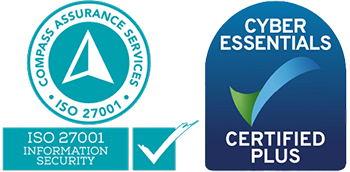Why Risk Reporting Often Fails at the Executive Level… (And How to Fix It)
Risk reporting is a cornerstone of effective governance, risk, and compliance within high-stakes industries such as government, mining, transportation, and nuclear energy. However, despite its critical role, many executives struggle to derive actionable insights from risk reporting. The consequence is weakened risk management, missed opportunities, and an increased likelihood of exposure to threats. This article explores why risk reporting frequently falls short at the executive level and provides practical solutions for improvement.
The Disconnect Between Risk Reporting and Business Priorities
One of the fundamental reasons risk reporting fails at the executive level is its misalignment with strategic objectives. Too often, reports focus on granular operational risks without linking them to broader business imperatives such as regulatory compliance, operational efficiency, and long-term sustainability. If risk reporting does not address issues that directly impact executive decision-making, it risks being perceived as an administrative burden rather than a strategic tool.
How to Fix It:
Risk reporting must be tailored to reflect the organisation’s core business priorities. Executives need insights into risks that could affect regulatory standing, operational continuity, or reputational integrity. Risk managers should collaborate closely with leadership teams to ensure reporting highlights key risks that require strategic attention.
Information Overload and Complexity
Executives are often inundated with overly detailed risk reporting, making it difficult to extract key insights. When reports are too complex or burdened with excessive data, they create confusion rather than clarity. This leads to decision paralysis, where leaders struggle to prioritise risks effectively.
How to Fix It:
Risk reporting should focus on high-impact risks and summarise key findings in an executive-friendly format. Visualisation techniques such as heatmaps, dashboards, and trend analyses can make complex data more digestible. Concise executive summaries should highlight the most pressing risks and recommended actions, ensuring decision-makers can engage with the content effectively.
Lack of Clarity and Accessibility
Risk reporting often relies on technical jargon, risk assessment models, and methodologies that are not always intuitive for executives who do not have a risk management background. If reports lack clarity, their effectiveness diminishes, and key stakeholders may disengage from the process.
How to Fix It:
Risk reporting should use clear, direct language, avoiding unnecessary complexity. Structuring reports with well-defined sections – identifying risks, their impact, and proposed mitigation strategies, can enhance clarity. Supplementing reports with visual aids, such as infographics and comparative risk analysis, can further improve accessibility.
Failure to Prioritise Risks
Not all risks carry the same significance, yet many reports fail to differentiate between critical threats and minor concerns. Without a prioritisation framework, executives may struggle to allocate resources effectively, addressing fewer pressing risks while overlooking those with the potential for severe consequences.
How to Fix It:
A structured risk ranking system should be implemented to categorise risks by likelihood and impact. Heatmaps and criticality assessments can visually represent priority risks. Risk reporting should focus on issues that demand immediate attention and provide a clear rationale for prioritisation decisions.
Reactive Rather Than Proactive Insights
Traditional risk reporting often focuses on past incidents rather than offering predictive insights into emerging threats. This reactive approach limits an organisation’s ability to anticipate and mitigate future challenges effectively.
How to Fix It:
Risk reporting should integrate real-time monitoring and predictive analytics to highlight emerging risks. Utilising artificial intelligence and machine learning can provide forward-looking insights, enabling proactive decision-making. A shift towards continuous risk assessment rather than periodic reporting enhances responsiveness to dynamic threats.
Siloed Risk Reporting Structures
Risk reporting is frequently fragmented across departments, leading to an incomplete picture of enterprise-wide risk exposure. When different units report risks in isolation, it creates blind spots and impedes a coordinated response.
How to Fix It:
A centralised risk reporting framework should consolidate data across all business units, providing a unified view of enterprise risk. Cross-departmental collaboration should be encouraged to ensure risks are assessed in the context of their broader organisational impact. Standardised reporting templates facilitate consistency and comparability.
Disconnection Between Risk and Performance Metrics
Executives are often focused on performance indicators such as operational efficiency and regulatory compliance. If risk reporting does not explicitly connect risks to these performance metrics, it may be undervalued as a decision-making tool.
How to Fix It:
Risk reporting should demonstrate how identified risks correlate with key performance indicators. Highlighting how risk mitigation efforts contribute to operational stability, safety, and compliance strengthens the strategic value of risk reporting. Providing quantifiable data on risk impacts enables executives to make informed decisions.
Inconsistent Risk Reporting Methodologies
Different departments may use varying approaches to risk assessment and reporting, making it difficult to compare risks across the organisation. A lack of standardisation undermines the reliability of risk reporting as a decision-support tool.
How to Fix It:
Risk reporting frameworks should be standardised to ensure consistency across all business units. Uniform risk assessment criteria should be adopted to facilitate comparability. Providing training and guidelines on risk reporting methodologies helps establish a cohesive approach across the organisation.
Lack of Actionable Recommendations
Risk reports that merely list risks without providing clear recommendations for mitigation offer little practical value. Executives need guidance on how to respond to identified threats.
How to Fix It:
Every risk report should include specific, actionable recommendations. Outlining potential mitigation strategies, assigning responsibility for actions, and establishing timelines for resolution enhance the effectiveness of risk reporting. Providing a structured roadmap for addressing risks ensures that reporting translates into meaningful risk management efforts.
Limited Executive Engagement
Risk reporting is sometimes viewed as a compliance exercise rather than a strategic function. If executives do not see the direct relevance of risk reporting to business outcomes, they are unlikely to engage meaningfully with the process.
How to Fix It:
Risk reporting should be integrated into strategic decision-making processes. Demonstrating how risk insights contribute to business resilience, regulatory compliance, and operational efficiency can enhance executive buy-in. Encouraging active participation from leadership in risk discussions ensures risk reporting remains a core element of governance.
Final Thoughts
Effective risk reporting is essential for high-risk industries where operational failures can have severe consequences. However, common pitfalls, such as information overload, poor communication, fragmented reporting, and lack of prioritisation, undermine its impact.
By adopting a structured approach that prioritises clarity, relevance, and strategic alignment, organisations can transform risk reporting into a powerful tool for executive decision-making. The future of risk management lies in leveraging real-time insights, predictive analytics, and integrated reporting systems to enhance organisational resilience. By addressing these shortcomings, businesses can ensure that risk reporting serves not just as a compliance requirement, but as a critical enabler of informed and proactive leadership.





